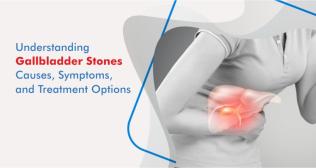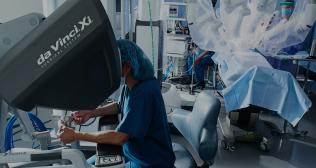
Robotic Surgery vs. Traditional Surgery for Gallstones
Gallstones are a common medical condition that affects millions of people worldwide. Traditional surgical methods, such as open cholecystectomy, have long been the standard of care for removing gallstones. However, with the advancements in technology, robotic surgery has emerged as a modern approach to gallstone treatment. In this blog, we will explore the differences between robotic surgery and traditional surgery for gallstones and how the former has revolutionized the operating room.
Robotic Surgery for Gallstones:
Robotic-assisted surgery utilizes state-of-the-art robotic systems, operated by skilled surgeons, to perform minimally invasive procedures. The da Vinci Surgical System is a widely used robotic platform in gallstone surgeries. With its high-definition 3D camera and precise instruments, robotic surgery offers improved visualization and dexterity, allowing surgeons to perform intricate tasks with greater accuracy.
Benefits of Robotic Surgery:
Minimally Invasive: Robotic surgery involves smaller incisions, resulting in reduced postoperative pain, shorter hospital stays, and faster recovery compared to traditional open surgery.
Enhanced Precision: The robotic arms can rotate 360 degrees, enabling surgeons to access hard-to-reach areas with exceptional precision, minimizing the risk of complications.
Less Blood Loss: Robotic surgery typically involves less blood loss compared to open surgery, which can reduce the need for blood transfusions.
Reduced Scarring: Smaller incisions mean minimal scarring, promoting better cosmetic outcomes and boosting patient satisfaction.
- Shorter Hospital Stay: Patients undergoing robotic surgery may have a shorter hospital stay and a faster return to normal activities compared to open surgery.
Traditional Surgery for Gallstones:
Traditional open cholecystectomy requires a large abdominal incision to access the gallbladder for stone removal. While effective, this approach involves longer recovery periods and a higher risk of infection and bleeding.
Robotic surgery has revolutionized the treatment of gallstones by offering patients a modern and less invasive alternative to traditional surgical methods. The improved precision, smaller incisions, and faster recovery times associated with robotic surgery make it an attractive option for patients and surgeons alike. However, the choice between robotic and traditional surgery should be based on individual patient factors and the surgeon's expertise. Collaborative decision-making between patients and healthcare professionals is essential to ensure the best possible outcome for gallstone treatment.
Categories
Clear allMeet the doctor

- General Surgery | General Surgery
-
20 Years
-
1100



















